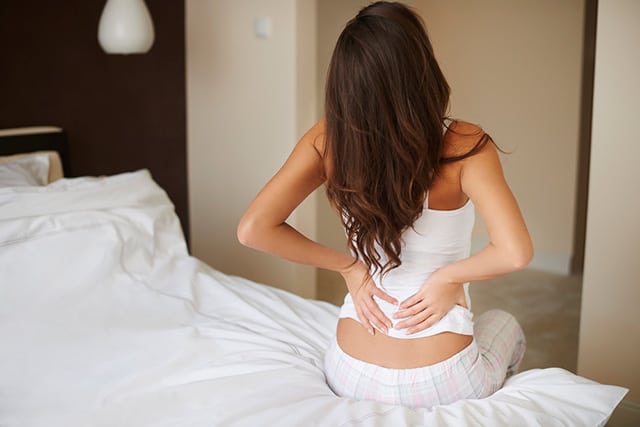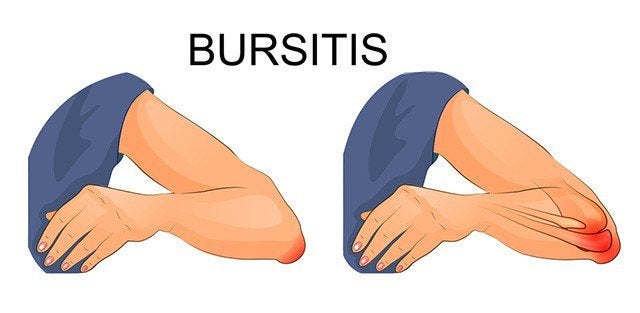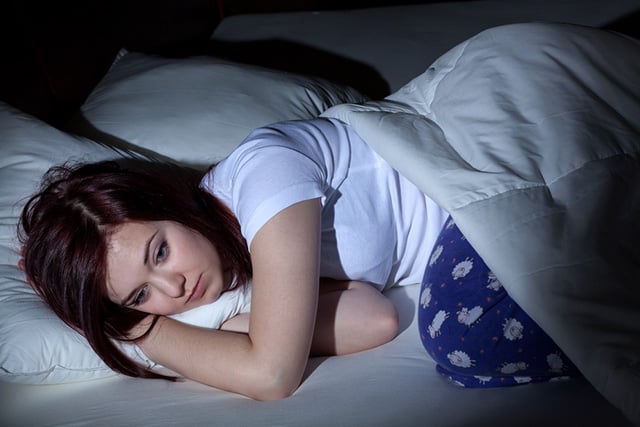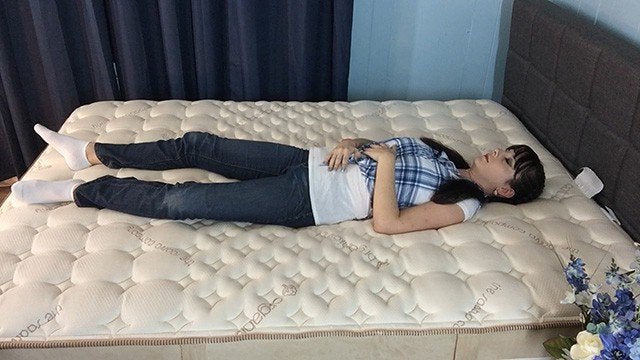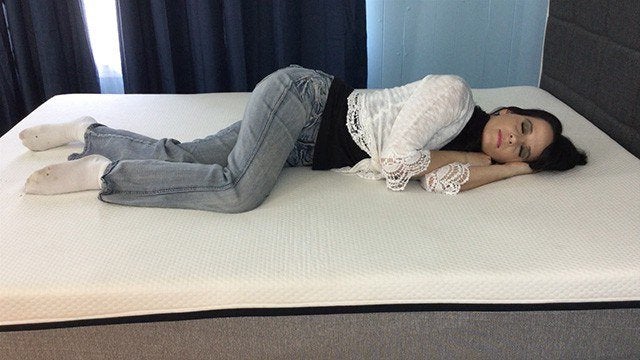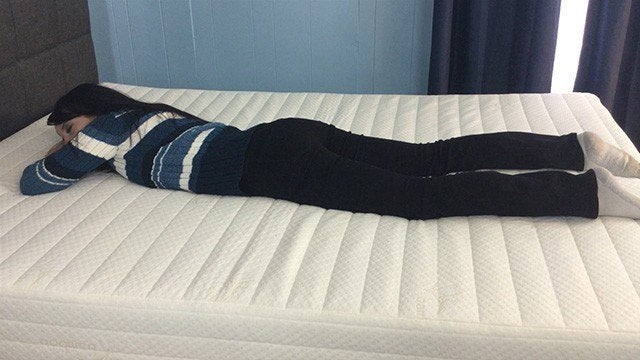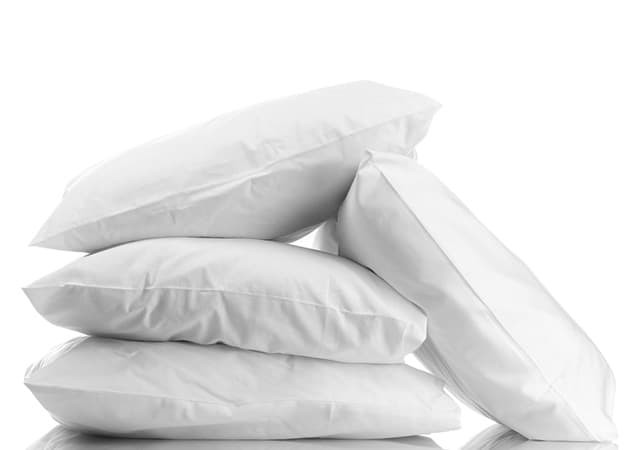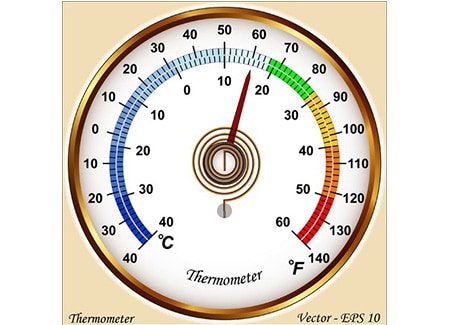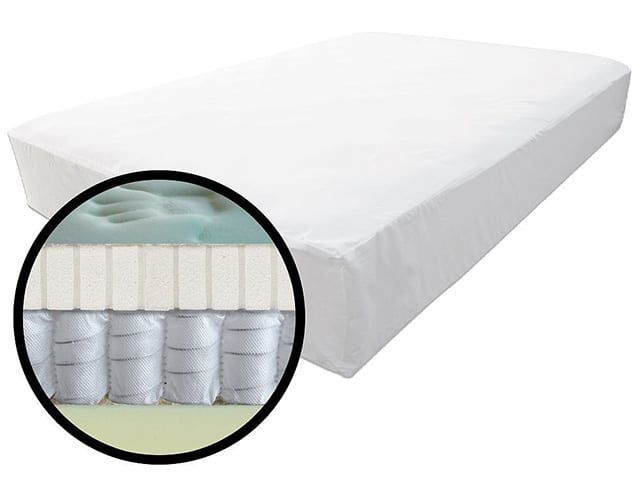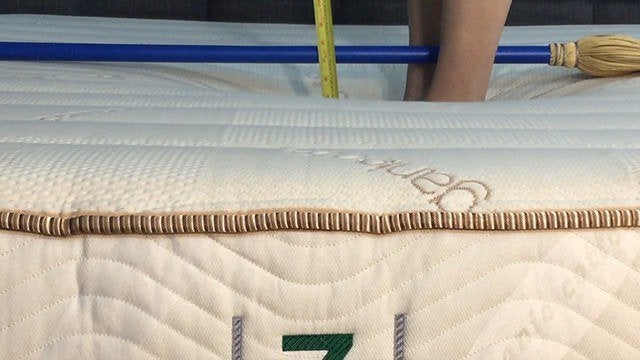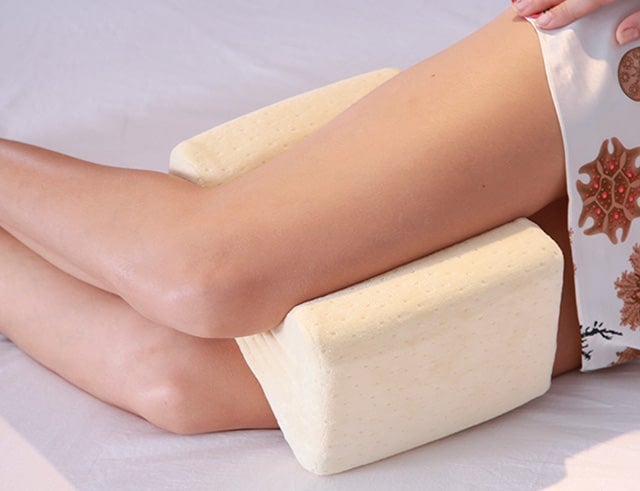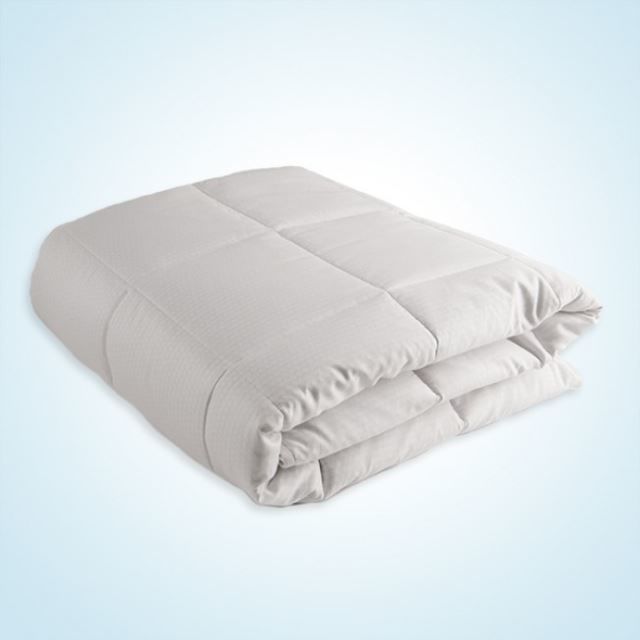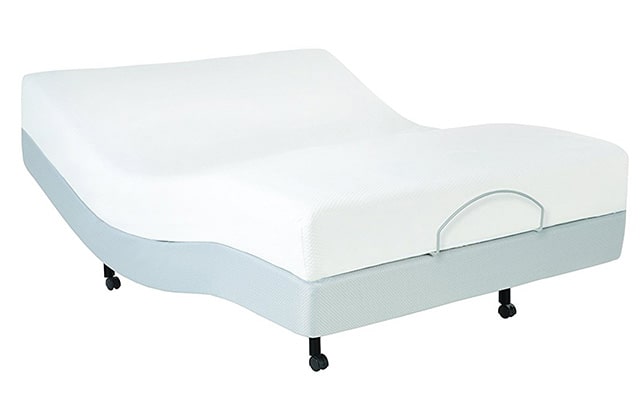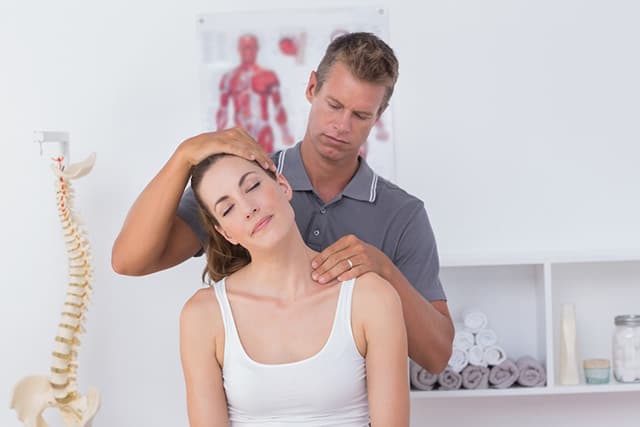A poor night’s rest is often a result of discomfort, and if you suffer from any sort of back or joint pain then you know how restless your sleep may be. Whether your symptoms are a result of an injury, arthritis, bursitis, or other diseases, chronic pain is the number one cause of interrupted sleep.
Sleep is also exactly what you need for pain recovery since poor sleep inhibits the body’s natural healing process and also triggers how your brain receives and reads messages from the central nervous system, often exasperating the pain you feel.
No matter the pain culprit, getting the rest you deserve, and need, should be a priority for your overall health and well being. The following guide and associated tips should help get you pointed in the right direction to do just that.
Quick Sleep Tips
- Choose the correct mattress for your sleep position
- Be sure to use a supportive pillow for neck support
- Elevating your legs over a pillow or rolled towel helps align your spine
- Cushion your joints with pillows
- Choose a mattress comfort level that supports your joints
- Pick the correct support for your weight
You may be interested in: Best Orthopedic Pillows for Back Pain
Causes of Back and Joint Pain
There are a myriad of causes to what may be the source of your back or joint pain, and some may be treatable, and some may not. But they all have one thing in common: it interrupts your sleep.
Whether you toss and turn to find a comfortable position, or waken from being in one position for too long, addressing this loss of sleep is crucial to your overall health. Sleep deprivation is a leading cause of both short and long term heal conditions, such as elevated blood pressure, heart disease, diabetes, and even incidences of stroke. Therefore it is important to address in order to not only provide you with the time your body needs to heal and regenerate, but also keep you mentally focused and aware.
1. Injury
Injury to your body can cause stiffness and pain throughout your body due to muscles working to help alleviate discomfort and areas of weakness. Injury to joints may cause pain for months until proper healing occurs, and when your spine itself is compromised, finding a comfortable position to rest in may be a challenge. Injuries resolve themselves over time with the proper care, but rest is incredibly important to soft tissue and bone regeneration. Interrupted sleep can very well slow down the healing process, or cause further contention over time.
2. Disease
Many diseases also are a source of issue. Various arthritic conditions which causes joint pain and swelling makes finding a comfortable position a challenge. Osteoporosis, a weakening of the bones, often results in poor spinal posture, making support each night a priority to avoid further issues from arising. Scoliosis is also often a chronic source of nighttime pain due to the body’s attempts to support an already misaligned spine, putting pressure on surrounding tendons and muscles.
3. Temporary Conditions
Treatable conditions, such as bursitis can affect even the most healthy of us due to the inflammation of joint fluid due to overuse or stress of the affected limb, making these joints tender and painful to the touch. Misalignment of the spine, joints, weakened muscles, or even just poor posture can all be conditional culprits of pain, and even though they are treatable, definitely may cause you to lose sleep until that happens.
4. Poor Sleep Conditions
Poor sleeping positions, the wrong mattress, or an old mattress can also be the culprit of back and joint pain. Undue stress upon the spine and joints is a common complaint due to a poor mattress fit. Many people are unaware of how important their sleep surface and pillow choices are to a proper night’s rest, and unfortunately cause many of their own problems through the wrong choices.
Sleep Tips to Help With Back and Joint Pain
Sleep Positions
Sleep positions are what your body falls into naturally throughout the night, but one position is far superior than the others for overall spinal support and body health. Of course, your natural sleep position does provide you with the best sleep available, but if it is causing your pain, or you cannot sleep in this position due to pain, then you need to either address the position or provide the best comfort.
Back Sleepers
If you are a back sleeper then you already are naturally beginning to support your body correctly. Sleeping on your back allows your spine to fall into its natural curvature and stay straight throughout the night. Your head and neck also stay in alignment, which is often a pain culprit in other positions
Using a supportive pillow, and elevating the legs under the knees can be helpful in spinal support as well, and help alleviate in back or joint pain not caused by this position. Back sleepers who still suffer from pain need to take a closer look at their mattress, as firmness levels and materials can play into comfort, as explained below.
Side Sleepers
Side sleepers also have a bit of an advantage, especially if you suffer from scoliosis as this often may be the best support for how the spine curves from side to side. Left side sleepers also increase blood circulation throughout the body, although it can cause pressure on internal organs depending on body weight. Right side sleepers open up lung function as well, but both sides elongate the spine, which helps with back pain.
Of course these positions are also dependent upon mattress choices in order to provide proper support. And knee or hip pain may sometimes worsen when sleeping on your side due to the pulling of weight downwards. Luckily this can be alleviated by placing a pillow between your knees, or even using a body pillow to better dissipate body weight.
You may want to read: Mattress Toppers for Hip Pain
Stomach Sleepers
The worst position for back and joint pain is sleeping on your stomach. Of course, if this is your natural position, then it probably does call for the best night’s rest, but it’s important to pay attention to your overall support to help keep pain from worsening, or even being caused by this position. Stomach sleeping doesn’t support the spine well, plus you have to turn your head to the side to sleep, causing a the spinal part of your neck to be out of alignment through the night.
Hips and shoulder pain is a common complaint due to this position, although proper support can alleviate these issues. Placing a pillow beneath your hips help raise this body weight and provide spinal support, and sleeping without a pillow under your head also contributes to better overall alignment.
Pillow Choices
I’ve mentioned pillows a few times already, and just like mattresses, most people are unaware of just how important your head support is to your overall sleep quality, and pain relief. How your head and neck rests affects the rest of your spine, and choosing the correct pillow in relation to your sleep position is a must.
Back Sleepers
Thinner, medium firm pillow choices that contour to the heft of your head and support your neck should be chosen if you are a back sleeper. A too firm pillow with no give may hold your head too high, interrupt breathing, and also put strain on your neck and spine. Too soft a pillow and your head may fall back, causing your neck to tip back and be stretched uncomfortably.
Side Sleepers
Side sleepers need a pillow that contours and supports the neck while holding the head in alignment with the spine. Contouring pillows, or special pillows shaped specifically for the neck and head are common choices. Pillow firmness should be enough to keep your head above your shoulders and wide enough to support the space between your shoulder and head.
Stomach Sleepers
Sleeping sans pillow truly is the best choice for stomach sleepers, but most people want a little bit of something between them and the mattress. A thin pillow, with cradling softness, is the best choice for you if this is your natural position.
Consider Your Sleep Environment
Many body aches and pains are caused by tension and stress upon your back and joints. Obviously proper positions and support can help alleviate this pain, but being able to wholly relax may actually address some of the discomfort you are experiencing. Being able to relax in your sleep environment is one factor you should consider.
Lighting
Dimming your lights and turning off electronics that emit blue light at least an hour before bed helps stimulate sleep hormones to prepare your mind for rest. Blue light mimics daylight and can trick the mind into feeling that it is still day. If you try to drift off too closely after being exposed to this you may have trouble falling asleep.
Side Sleepers
Your body naturally cools while you sleep, and the ideal night time sleep temperature is between 60 and 67 degree fahrenheit. Making sure your room temperature is within this range and allowing your body to cool off and relax before bed prepares it for this deeper rest.
Avoid Stimulants
Caffeine, sugars, and alcohol all can stimulate your body into continuing to process and work for up to 6 hours after intake. Ceffeine in particular sends messages to the brain for wakefulness, and can cause issues with sleep. These also can affect your hydration rates, and cause your aches and pains to feel even worse.
Best Bedding Choices for Back and Joint Pain Sufferers
No matter what steps you take for a good sleep, if you still find yourself uncomfortable, getting any may be fleeting. I’ve mentioned how your sleep position and pillow choices all support your spine and body on a whole, but your bedding choices should coincide with these particular details- especially if you have adjusted position and pillows and still are in pain.
Mattresses for Sleep Position
Your mattress choices need to match your sleep positions, or you will find yourself unsupported and possibly in more pain than usual. Back and stomach sleepers generally need a more supportive mattress with a firmer feel to help hold the spine in alignment.
Mattresses that have coil systems that respond individually to different weighted parts of the body, foams that contour regardless of weight, and support systems that differ from shoulder to torso to hip area are all things to look for when deciding on the correct mattress.
Side sleepers need a softer, or more plush comfort surface to provide response to hip and shoulder weight and pressure points. Side sleepers need their heavier body areas to sink in order to keep their spine straight.
Mattresses for Weight
Heavier weighted bodies need proper support. Firm surfaces no matter the sleep position, innerspring coils, hybrid mattresses, and latex foams are some of the more supportive, yet giving materials and construction that provides what you need over time. A softer surface will most likely constrict and breakdown faster under heavier weights, and may cause heat sinks, and strain upon the spine as well.
Mattress to Address Heat
If you sleep hot, it interrupts your sleep and most likely exasperates your pain issues. Avoid ultra contouring mattress surfaces that envelope you in their surface layers because this traps heat against your body. Instead, look for breathable materials, such as latex, gel-infused foams, and innersprings that allow air flow and cooling surfaces.
Joint Support Choices
If your pain is a symptom of joint swelling and aches, then you’ll need to address the support of these areas of discomfort. Foams and pillow tops typically allow for a softer surface without sacrificing overall support. Joints should be cradled, so avoid materials that push back against them. Providing pillows between knees or under hips during the night can help as well. Don’t feel you need to avoid firm surfaces since many firmer mattresses also provide a layer to help with pressure points.
Memory foam is a popular choice for those suffering from arthritis and osteoporosis due to the plush contouring it provides. The foam responds to your body shape and heat to wrap around pressure points rather than push against which may cause further pain.
Mattress Pads
If purchasing a mattress isn’t quite in the budget, or you do like you bed but are in need of a little something more firm, or soft, to address pain issues- think about what the proper mattress pad can do for you. Mattress pads are usually made out of varying foams to provide pressure point relief or additional support depending on the foam type.
Latex foams are often more firm and supportive. They are also more breathable than other foams and can cool off your rest. Memory foams are known for their continuing plushness, which alleviates pressure points and softens a more firm surface. Other general poly foams can provide either depending on construction, but may not last as long as latex or memory choices.
Adjustable Beds
If purchasing a mattress isn’t quite in the budget, or you do like you bed but are in need of a little something more firm, or soft, to address pain issues- think about what the proper mattress pad can do for you. Mattress pads are usually made out of varying foams to provide pressure point relief or additional support depending on the foam type.
Latex foams are often more firm and supportive. They are also more breathable than other foams and can cool off your rest. Memory foams are known for their continuing plushness, which alleviates pressure points and softens a more firm surface. Other general poly foams can provide either depending on construction, but may not last as long as latex or memory choices.
Other Tips to Consider
Under directions from your doctor, you can consider other pain relieving options. Regular visits with chiropractors can help determine spinal issues and pain sources to work with pain relief and correction. Over the counter anti inflammatories can ease pain temporarily to help you fall asleep, and even stronger pain relief can be prescribed.
Sleep aides can include both over the counter and prescription medications, as well as more natural, homeopathic choices, such as natural oils and massage to help loosen tight muscles and increase blood flow for healing. Acupuncture can also address pain issues.
Conclusion
Back and joint pain can be caused by a long list of reasons, but they all often cumulate in one thing: a discomfort and inability to rest easy for long periods of time. Addressing your personal preferences and applying them to your sleep comfort can make a pretty significant difference in both your body comfort, and proper rest.
Make sure you have worked with your healthcare provider to get the best pain relief they can provide, but also address your mattress surface comforts, and properly support your body in your sleep position preferences. This includes how firm your mattress is, and what type of pillow you use. Also using supportive pillows under joints and parts of your body to support your spine may help alleviate much of your nighttime pain.
